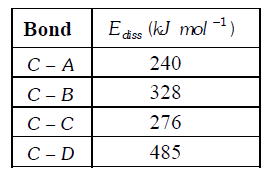Which element among the lanthanides has the smallest atomic radius
Cerium
Lutetium
Europium
Gadolinium
The correct Answer is:B
To determine which element among the lanthanides has the smallest atomic radius, we can follow these steps:
Step 1: Identify the Lanthanide Series
The lanthanide series consists of 15 elements, starting from Cerium (Ce, atomic number 58) to Lutetium (Lu, atomic number 71). The elements in this series are:
- Cerium (Ce, 58)
- Praseodymium (Pr, 59)
- Neodymium (Nd, 60)
- Promethium (Pm, 61)
- Samarium (Sm, 62)
- Europium (Eu, 63)
- Gadolinium (Gd, 64)
- Terbium (Tb, 65)
- Dysprosium (Dy, 66)
- Holmium (Ho, 67)
- Erbium (Er, 68)
- Thulium (Tm, 69)
- Ytterbium (Yb, 70)
- Lutetium (Lu, 71)
Step 2: Understand Atomic Radius Trends
In the lanthanide series, as we move from left to right, the atomic number increases while the number of electron shells remains the same. This results in an increase in the positive charge of the nucleus, which leads to a stronger attraction between the nucleus and the electrons. Consequently, the atomic radius decreases.
Step 3: Analyze the Options
The options provided are:
1. Cerium (Ce)
2. Lutetium (Lu)
3. Europium (Eu)
4. Gadolinium (Gd)
Step 4: Determine the Smallest Atomic Radius
Among the lanthanides, Lutetium (Lu) has the highest atomic number (71) and therefore the smallest atomic radius due to the increased nuclear charge and the corresponding decrease in atomic size.
Conclusion
Thus, the element among the lanthanides that has the smallest atomic radius is Lutetium (Lu).
---
The lanthanide series consists of 15 elements, starting from Cerium (Ce, atomic number 58) to Lutetium (Lu, atomic number 71). The elements in this series are:
- Cerium (Ce, 58)
- Praseodymium (Pr, 59)
- Neodymium (Nd, 60)
- Promethium (Pm, 61)
- Samarium (Sm, 62)
- Europium (Eu, 63)
- Gadolinium (Gd, 64)
- Terbium (Tb, 65)
- Dysprosium (Dy, 66)
- Holmium (Ho, 67)
- Erbium (Er, 68)
- Thulium (Tm, 69)
- Ytterbium (Yb, 70)
- Lutetium (Lu, 71)
In the lanthanide series, as we move from left to right, the atomic number increases while the number of electron shells remains the same. This results in an increase in the positive charge of the nucleus, which leads to a stronger attraction between the nucleus and the electrons. Consequently, the atomic radius decreases.
The options provided are:
1. Cerium (Ce)
2. Lutetium (Lu)
3. Europium (Eu)
4. Gadolinium (Gd)
Among the lanthanides, Lutetium (Lu) has the highest atomic number (71) and therefore the smallest atomic radius due to the increased nuclear charge and the corresponding decrease in atomic size.
Thus, the element among the lanthanides that has the smallest atomic radius is Lutetium (Lu).
Topper's Solved these Questions
- ALCOHOLS, PHENOLS AND ETHERSBook:AAKASH INSTITUTE ENGLISHChapter: ALCOHOLS, PHENOLS AND ETHERSExercise:Try yourself
Explore 5 Videos
- ALCOHOLS, PHENOLS AND ETHERSBook:AAKASH INSTITUTE ENGLISHChapter: ALCOHOLS, PHENOLS AND ETHERSExercise:Exercise
Explore 40 Videos
- ALCOHOLS, PHENOLS AND ETHERS Book:AAKASH INSTITUTE ENGLISHChapter:ALCOHOLS, PHENOLS AND ETHERS Exercise:Try Yourself
Explore 5 Videos
Similar Questions
In any transition series, from left to right, the d-orbitals are progressively filled and their properties vary accordingly.
Q. Which element do you expect to have the smallest atomic radius?
View SolutionThe table shown below gives the bond dissociation energies (Ediss) for single covalent bonds of carbon (C ) atom with element A,B,c and D. Which element out of these has the smallest atoms ?

View Solution
Knowledge Check
Which one of the following has the smallest atomic radius?
ALithiumBFluorineCPotassiumDChlorineWhich one of the following has the largest atomic radius?
ALiBFCKDBr
The atomic number of three elements A, B and C are given below :
ElementABCAtomic number5710
Answer the following:
(a) Write the group number of the three elements in the Modern Periodic Table.
(b) Mention the period of these elements in the Modern Periodic Table.
(c) Out of these three elements which one has the smallest atomic radius and why ?
View SolutionWhich among the following elements has the largest atomic radii ?
View SolutionWhich of the following anion has the smallest radius?
View SolutionWhich of the following anion has the smallest radius?
View Solutionwhich of the following ions has the smallest radius?
View SolutionWhich of these element pairs possess nearly the same atomic radius?
View Solution